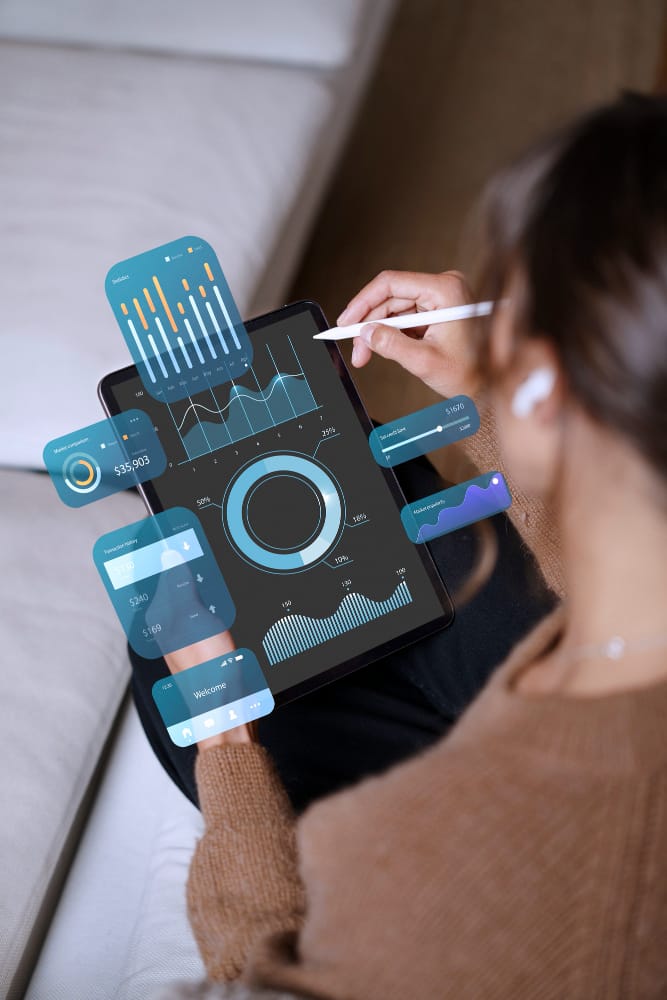In today’s data-driven world, retail businesses are constantly seeking innovative ways to increase sales while simultaneously strengthening in-store security. The adoption of video analytics in retail industry is rapidly becoming a cornerstone of this transformation. What was once used purely for surveillance and loss prevention is now evolving into a sophisticated tool for gaining customer insights, optimizing store operations, and enhancing shopper experiences.
As retailers navigate a competitive landscape shaped by digital disruption and changing consumer expectations, video analytics stands out as a bridge between physical and digital retail environments. By turning visual data into actionable intelligence, it offers a dual advantage—strengthening security frameworks while driving business performance.
The Evolving Role of Video Surveillance in Retail
Traditional CCTV systems in retail settings have long been used to deter theft and monitor employee behavior. However, their utility has often been limited to passive observation or post-incident reviews. With advancements in computer vision, artificial intelligence, and machine learning, video surveillance has transformed into a dynamic analytics engine capable of real-time decision-making and behavioral pattern recognition.
Modern video analytics solutions in the retail industry go far beyond basic motion detection. They analyze footfall, heatmaps, dwell times, customer movement paths, and demographic profiling. These insights provide retailers with a granular understanding of in-store behavior, helping them tailor the shopping experience while also improving store layout and staffing.
Enhancing Store Security with Real-Time Intelligence
Security remains a top priority for retailers, especially in high-traffic stores or chains with multiple outlets. Video analytics enhances traditional surveillance systems by adding intelligent layers of detection and alerting. These systems can identify unusual behaviors such as loitering, unauthorized access, or abrupt crowd gathering, triggering alerts in real time.
In addition to detecting potential theft or vandalism, video analytics helps in recognizing internal fraud or procedural violations. For instance, system alerts can be configured for after-hours movement, tailgating at entry points, or cash register irregularities. This level of automation ensures that store managers or security teams are immediately informed of suspicious activities, enabling rapid response and reducing losses.
Moreover, integration with facial recognition and license plate detection further strengthens perimeter control and access management, especially in retail warehouses or logistics hubs. The ability to correlate facial data with transaction records can also help identify repeat offenders or verify employee credentials seamlessly.
Driving Sales Through Customer Behavior Insights
Beyond security, the true potential of video analytics in retail industry lies in its ability to influence sales and marketing strategies. Every customer entering a store generates a stream of visual data. When analyzed intelligently, this data reveals buying patterns, shopper demographics, peak visit times, and even emotional responses to displays or promotions.
Heatmaps generated by video analytics systems show where customers spend most of their time, which areas are ignored, and how they navigate through the store. Retailers can use this information to reposition products, adjust shelf placements, or create more engaging promotional zones. In-store campaigns that once relied on guesswork are now backed by concrete visual metrics.
Furthermore, video analytics systems can determine gender, age group, and engagement levels of customers. This allows store managers to deploy targeted digital signage and personalized promotions. Imagine a display changing its content based on the person standing in front of it—this level of real-time interactivity is made possible by intelligent video analysis.
Optimizing Operations and Staff Management
Retail success isn’t solely about what’s on the shelves—it’s also about how efficiently the store operates. Video analytics in retail industry helps streamline daily operations by offering insights into queue lengths, service times, and staffing efficiency. For instance, when the system detects long queues at billing counters, it can alert the store manager to open additional counters, ensuring better customer satisfaction and reduced drop-offs.
Similarly, the analysis of staff movement patterns can help in optimizing resource allocation. By understanding which sections of the store receive maximum footfall during specific hours, managers can position sales personnel strategically to assist customers better, enhancing overall service quality.
In larger retail chains, where centralized management monitors multiple outlets, video analytics enables standardized performance assessments. Stores that perform well in terms of engagement metrics can serve as benchmarks for others, driving uniformity in customer experience across locations.
Real-Time Alerts and Incident Response
One of the most powerful features of intelligent video analytics is real-time alerting. The system can be programmed to detect events such as overcrowding, aggressive behavior, or fire hazards, and trigger immediate alerts to security or management teams. This capability is especially crucial during peak shopping seasons, special promotions, or public health situations where social distancing must be enforced.
In addition, video analytics can be integrated with emergency response protocols. If an incident occurs—whether it’s a theft, a medical emergency, or a fire—the system can assist by identifying affected areas, tracking individuals, and helping responders reach the exact location promptly.
Conclusion
Video analytics in retail industry is no longer just about surveillance—it’s a strategic tool that helps businesses drive sales, enhance security, and deliver superior customer experiences. By converting raw video feeds into meaningful intelligence, retailers can make smarter decisions, respond faster to incidents, and stay competitive in a rapidly changing market landscape. As adoption grows and technologies mature, video analytics will be at the forefront of the retail revolution, helping physical stores not just survive—but thrive—in the digital age.


